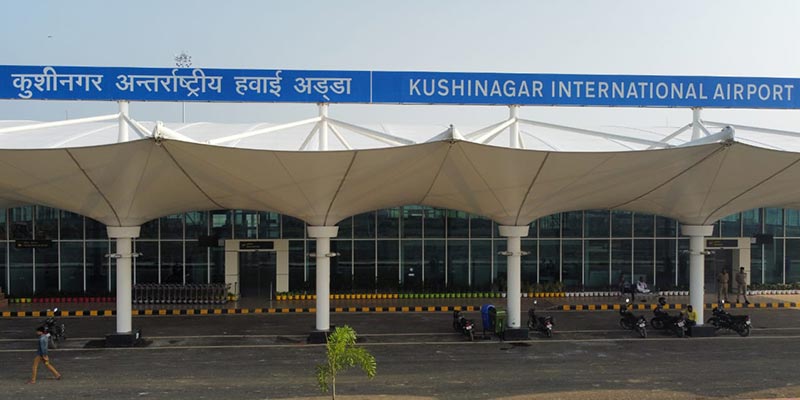- India
- Oct 20
PM Modi inaugurates Kushinagar International Airport
• Prime Minister Narendra Modi inaugurated a new international airport at Kushinagar in Uttar Pradesh.
• The PM also participated in an event marking ‘Abhidhamma Day’ at the Mahaparinirvana Temple in Kushinagar.
• ‘Abhidhamma Day’ symbolises the end of three-month rainy retreat ‘varshavaas’ or ‘vassa’ for the Buddhist monks during which they stay at one place in vihara and monastery and pray.
• Kushinagar is the final resting place of Lord Buddha where he attained Mahaparinirvana and is among the most important pilgrim spots for Buddhists.
Significance of the airport
• The new airport, built at an estimated cost of Rs 260 crore, is part of the government’s endeavour to connect Buddhist pilgrimage sites around the world.
• The new Kushinagar airport’s terminal building is spread across 3,600 square metres. It has been developed by the Airports Authority of India (AAI) in association with the Uttar Pradesh government.
• The new terminal can handle 300 passengers during peak hours.
• The airport will serve nearby districts of Uttar Pradesh and Bihar and is an important step in boosting investment and employment opportunities in the region.
• The airport will help in attracting more followers of Buddhism from home and abroad to Kushinagar and will enhance the development of a Buddhist theme-based circuit.
• It is the centre point of the Buddhist circuit, which consists of pilgrimage sites at Lumbini, Sarnath and Gaya. The journey to sites like Lumbini, Bodhgaya, Sarnath, Kushinagar, Shravasti, Rajgir, Sankisa and Vaishali of the Buddhist circuit will be covered in lesser time.
• Tourism inflow is expected to rise by upto 20 per cent with inauguration of the flight.
• Direct aviation connectivity with South Asian countries will make it easier for tourists arriving from Sri Lanka, Japan, Taiwan, South Korea, China, Thailand, Vietnam, Singapore, etc to reach Kushinagar and experience the rich heritage of the region.
• The Kushinagar International Airport will not only put the pilgrimage site on international aviation map but also give a boost to economic development of the region. It will have a multiplier effect on the hospitality industry by promoting hotel business, tourism agencies, restaurants, etc. It will create employment for local people by opening the immense amount of opportunities in feeder transport services, local guide jobs, etc.
Buddhist theme-based circuit
• Buddhist tourism in India has the potential to draw 500 million Buddhists across the world to “The Land of Buddha”. India has a rich ancient Buddhist heritage with several important sites associated with the life of Lord Buddha.
Swadesh Darshan
• The scheme aims at the development of thematic circuits in a planned and prioritised manner across India.
• In January 2015, the tourism ministry launched the Swadesh Darshan scheme (central sector scheme) with five circuits — Himalayan, North East, Krishna, Buddhist and Coastal.
• Later during 2015, 2016 and 2017, 10 more thematic circuits namely Desert, Tribal, Eco-Tourism, Wildlife, Rural, Spiritual, Ramayana Circuit, Heritage, Tirthankar and Sufi were added, taking the total to 15 thematic circuits.
• Since the inception of the scheme, a total of 76 projects have been sanctioned covering thematic circuits for a revised sanction amount of Rs 5,684.67 crore out of which Rs 4,278.88 crore (as on December 31, 2020) have been released.
Manorama Yearbook app is now available on Google Play Store and iOS App Store

